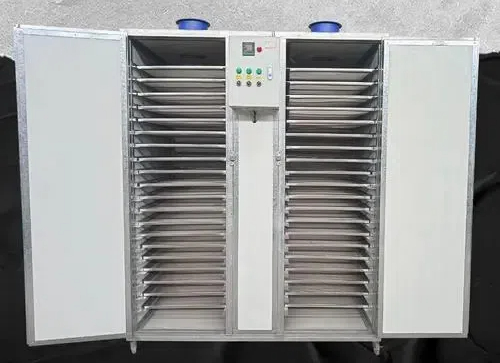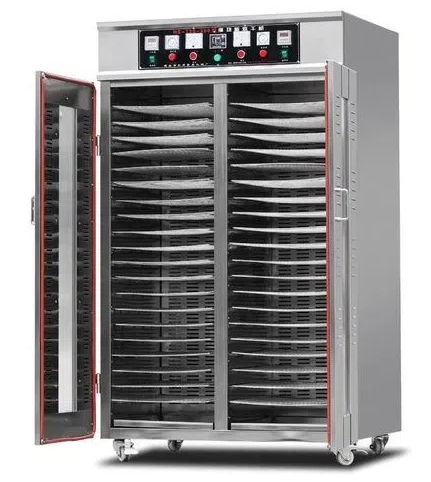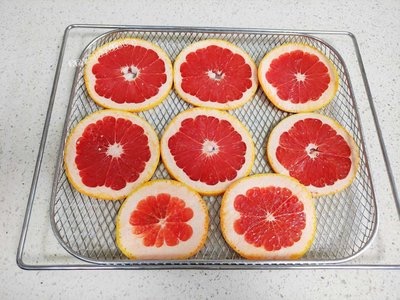
Content Menu
● Understanding Food Drying Technologies
● Energy Efficiency Comparison
>> Heat Pump Dryers: The Energy Efficient Choice
● Conventional Dryers: A Closer Look
● Applications in the Food Industry
>> Ideal Uses for Heat Pump Dryers:
>> Conventional Dryer Applications:
● Factors Influencing Your Choice
>> 1. Product Type
>> 2. Volume of Production
>> 3. Space Considerations
>> 4. Initial Investment vs Long-Term Savings
● Innovations in Food Drying Technology
● Conclusion
● FAQ
>> 1. What is the main difference between heat pump dryers and normal dryers?
>> 2. Are heat pump dryers more expensive than conventional dryers?
>> 3. Can I use a heat pump dryer for all types of food?
>> 4. How do I maintain a heat pump dryer?
>> 5. What factors should I consider when choosing a dryer for my business?
In the world of food drying, the choice between a heat pump dryer and a conventional dryer can significantly impact energy efficiency, product quality, and operational costs. As a manufacturer of food drying machines in China, we understand the nuances of these technologies and their implications for food brands, wholesalers, and producers. This article will delve into the differences between heat pump dryers and normal dryers, focusing on energy efficiency, operational benefits, and applications in the food industry.

Understanding Food Drying Technologies
Food drying is a critical process in preserving food products, extending shelf life, and enhancing flavors. The two primary types of dryers used in the industry are:
- Heat Pump Dryers: These utilize a refrigeration cycle to transfer heat from the environment to the drying chamber. They are known for their energy efficiency and ability to operate at lower temperatures.
- Normal Dryers (Conventional Dryers): These typically use direct heating methods, such as electric or gas heating elements, to dry food products. While they are widely used, they may consume more energy and can lead to higher operational costs.
Energy Efficiency Comparison
When comparing heat pump dryers to conventional dryers, energy efficiency is a crucial factor. Here's how they stack up:
| Feature | Heat Pump Dryer | Normal Dryer |
| Energy Consumption | Lower (up to 50% less) | Higher (more energy-intensive) |
| Operating Temperature | Lower (40-70°C) | Higher (up to 90°C) |
| Environmental Impact | Reduced carbon footprint | Higher emissions |
| Cost Savings | Significant over time | Limited savings |
Heat Pump Dryers: The Energy Efficient Choice
Heat pump dryers are designed to be highly efficient. They recycle heat within the system, which means they require less energy to operate compared to traditional dryers. By using lower temperatures for drying, heat pump dryers also minimize the risk of damaging sensitive food products like fruits and vegetables.
Advantages of Heat Pump Dryers:
- Reduced Energy Costs: The initial investment may be higher, but the long-term savings on energy bills can be substantial.
- Better Quality Products: The lower drying temperatures help retain more nutrients, flavors, and colors in the food.
- Versatility: They can be used for various products, including fruits, vegetables, herbs, and meats.
- Humidity Control: Heat pump dryers maintain optimal humidity levels during the drying process, which helps prevent spoilage and ensures uniform drying.
- Less Waste: By preserving more nutrients and flavors, heat pump dryers reduce waste associated with spoiled or inferior quality products.
Conventional Dryers: A Closer Look
While conventional dryers are prevalent in many industries due to their simplicity and lower upfront costs, they come with several disadvantages.
Disadvantages of Normal Dryers:
- Higher Operating Costs: The increased energy consumption leads to higher utility bills.
- Quality Concerns: The high temperatures can cause nutrient loss and alter the taste and texture of food products.
- Environmental Impact: Higher energy usage contributes to a larger carbon footprint.
- Limited Control: Conventional dryers often lack precise control over temperature and humidity levels, leading to inconsistent drying results.

Applications in the Food Industry
Both heat pump and normal dryers have their place in the food industry. However, heat pump dryers are increasingly becoming the preferred choice for many businesses focused on sustainability and quality.
Ideal Uses for Heat Pump Dryers:
- Fruit Drying: Preserves color and flavor effectively without compromising nutritional value.
- Vegetable Dehydration: Maintains nutritional value while allowing for extended shelf life.
- Herb Drying: Retains essential oils and aromas that are crucial for culinary applications.
- Meat Drying: Efficiently removes moisture while preserving taste; ideal for jerky production.
Conventional Dryer Applications:
- Bulk Drying Needs: Suitable for large quantities where cost is a priority over quality.
- Less Sensitive Products: Works well with items that can withstand higher temperatures without losing quality.
Factors Influencing Your Choice
When deciding between heat pump dryers and conventional dryers for your business needs, several factors should be taken into account:
1. Product Type
The type of food being dried plays a significant role in determining which dryer is most suitable. For delicate items like berries or herbs that require careful handling to maintain quality, heat pump dryers are often preferred due to their gentle drying capabilities. Conversely, bulkier items may be effectively dried using conventional methods if cost is a primary concern.
2. Volume of Production
Businesses with high production volumes might initially lean towards conventional dryers due to their lower upfront costs. However, as production scales up, the cumulative energy costs associated with normal dryers can diminish profit margins significantly over time.
3. Space Considerations
Heat pump dryers generally require more space than conventional models due to their additional components like compressors and evaporators. Businesses must evaluate their available space before making a decision.
4. Initial Investment vs Long-Term Savings
While heat pump dryers have a higher initial purchase price compared to conventional models, their energy efficiency leads to lower operating costs over time. Businesses should conduct a cost-benefit analysis considering both upfront investment and long-term savings when selecting equipment.
Innovations in Food Drying Technology
The food drying industry is evolving rapidly with technological advancements aimed at improving efficiency and product quality. Some notable innovations include:
- IoT Integration: Smart technology allows for real-time monitoring of temperature and humidity levels within the dryer. This ensures optimal conditions throughout the drying process.
- Energy Recovery Systems: New designs incorporate systems that recover waste heat generated during operation, further enhancing overall efficiency.
- Automated Controls: Advanced control systems allow operators to set specific parameters tailored to different types of foods, ensuring consistent results across batches.
These innovations not only improve operational efficiency but also contribute to sustainability efforts by reducing energy consumption and waste generation.
Conclusion
In conclusion, choosing between a heat pump dryer and a normal dryer hinges primarily on energy efficiency and product quality. While conventional dryers may offer lower initial costs, their long-term operational expenses can outweigh these savings. Heat pump dryers stand out as an environmentally friendly option that provides significant cost savings over time while preserving the integrity of food products.
As businesses increasingly prioritize sustainability and product quality, investing in heat pump technology is becoming more appealing. For manufacturers looking to optimize their operations while minimizing environmental impact, heat pump dryers represent a forward-thinking solution that aligns with modern consumer demands for high-quality dried foods.

FAQ
1. What is the main difference between heat pump dryers and normal dryers?
Heat pump dryers recycle heat within their system for more efficient drying at lower temperatures, while normal dryers use direct heating methods that consume more energy.
2. Are heat pump dryers more expensive than conventional dryers?
Yes, heat pump dryers typically have a higher initial purchase price but offer significant savings on energy costs over time.
3. Can I use a heat pump dryer for all types of food?
Yes, heat pump dryers are versatile and suitable for drying fruits, vegetables, herbs, meats, and more without compromising quality.
4. How do I maintain a heat pump dryer?
Regular maintenance includes cleaning filters regularly checking refrigerant levels ensuring proper airflow around the unit.
5. What factors should I consider when choosing a dryer for my business?
Consider energy efficiency product quality retention initial investment costs maintenance requirements your specific drying needs.











